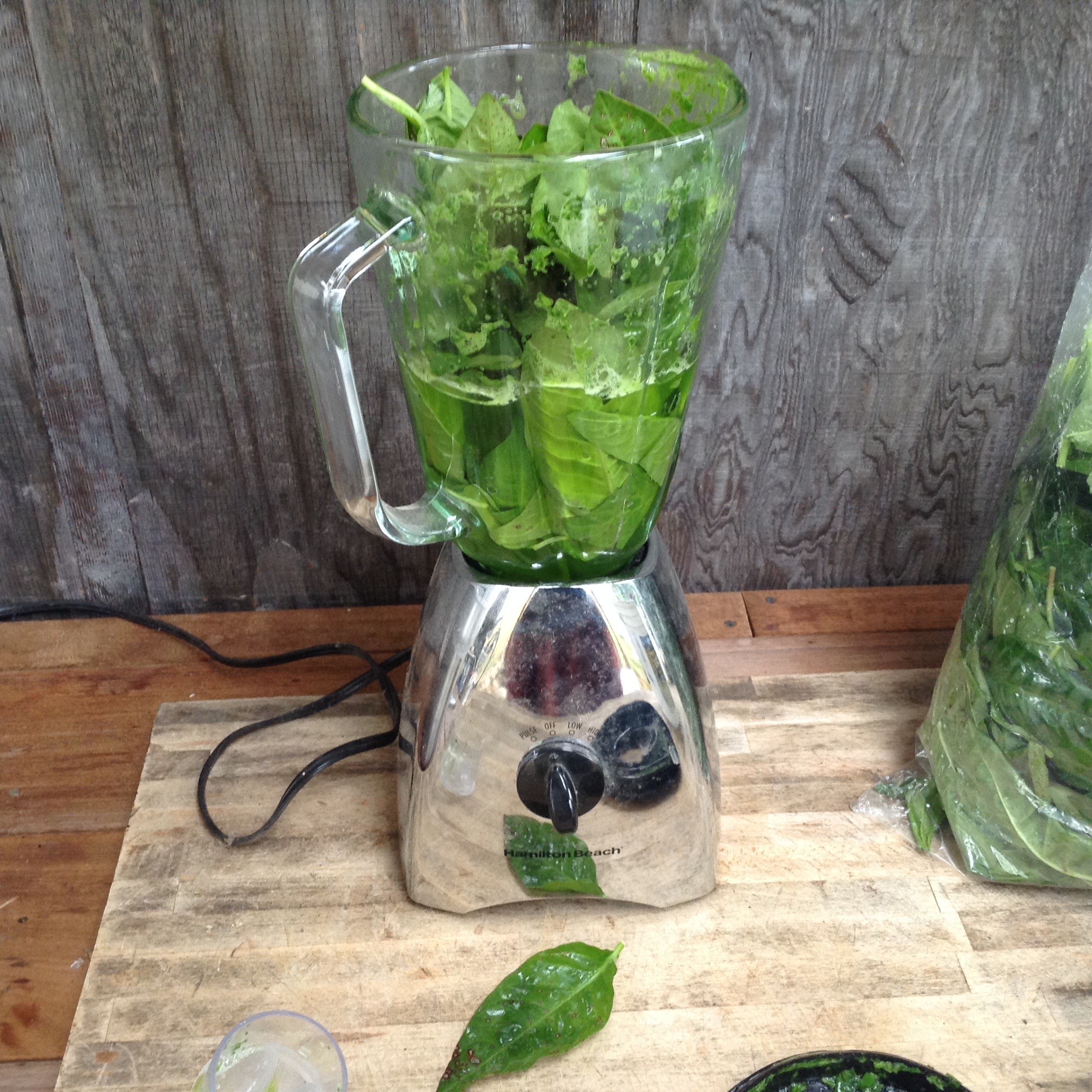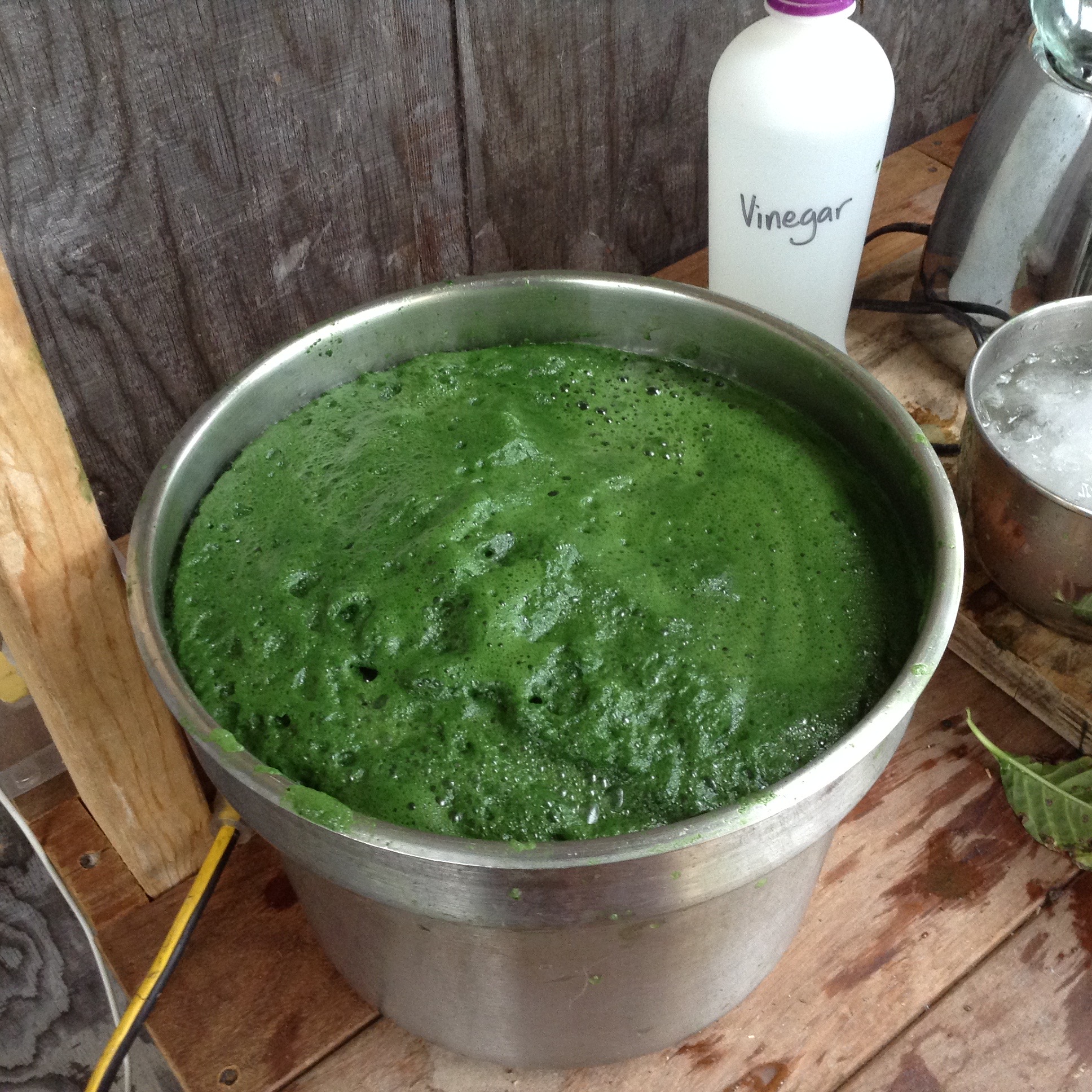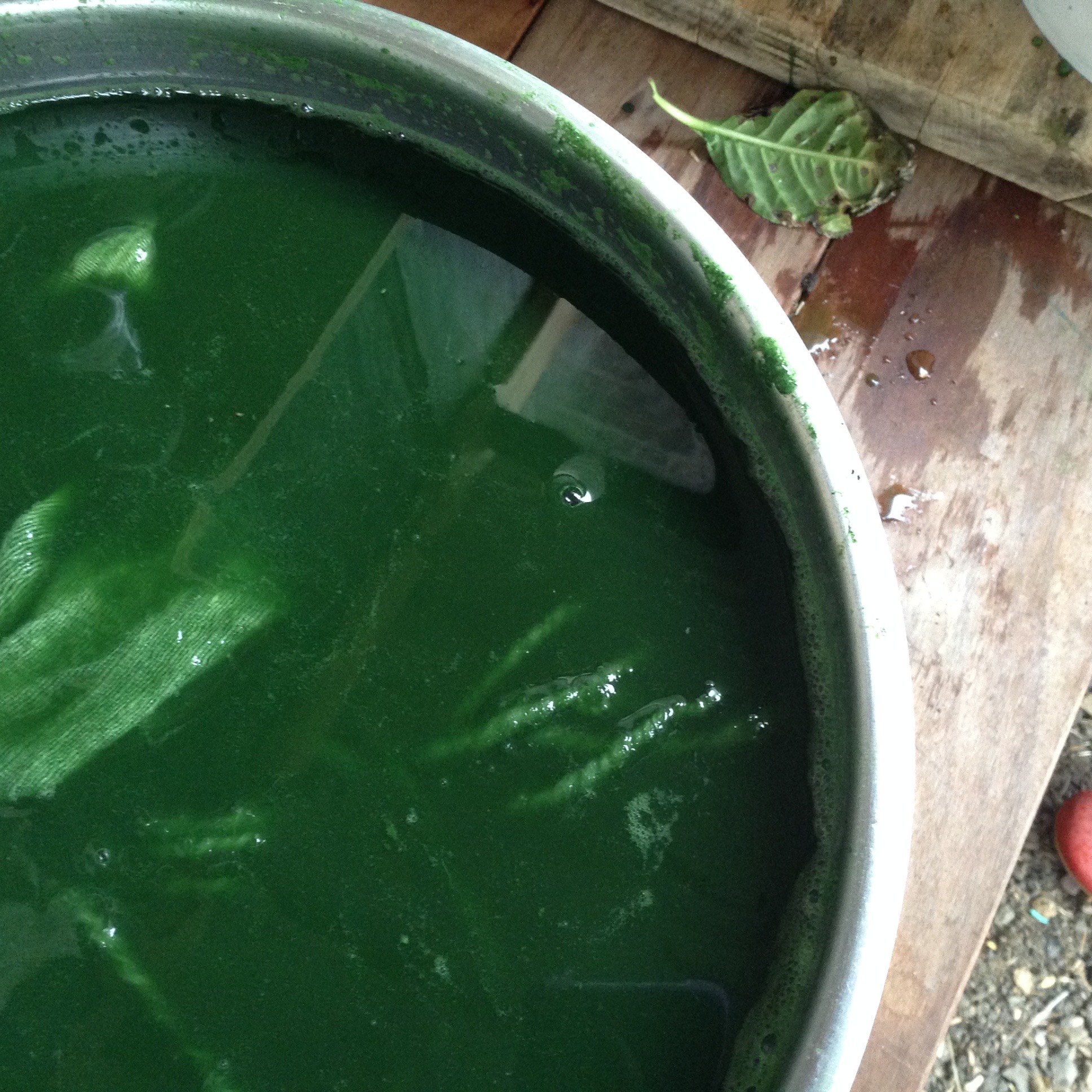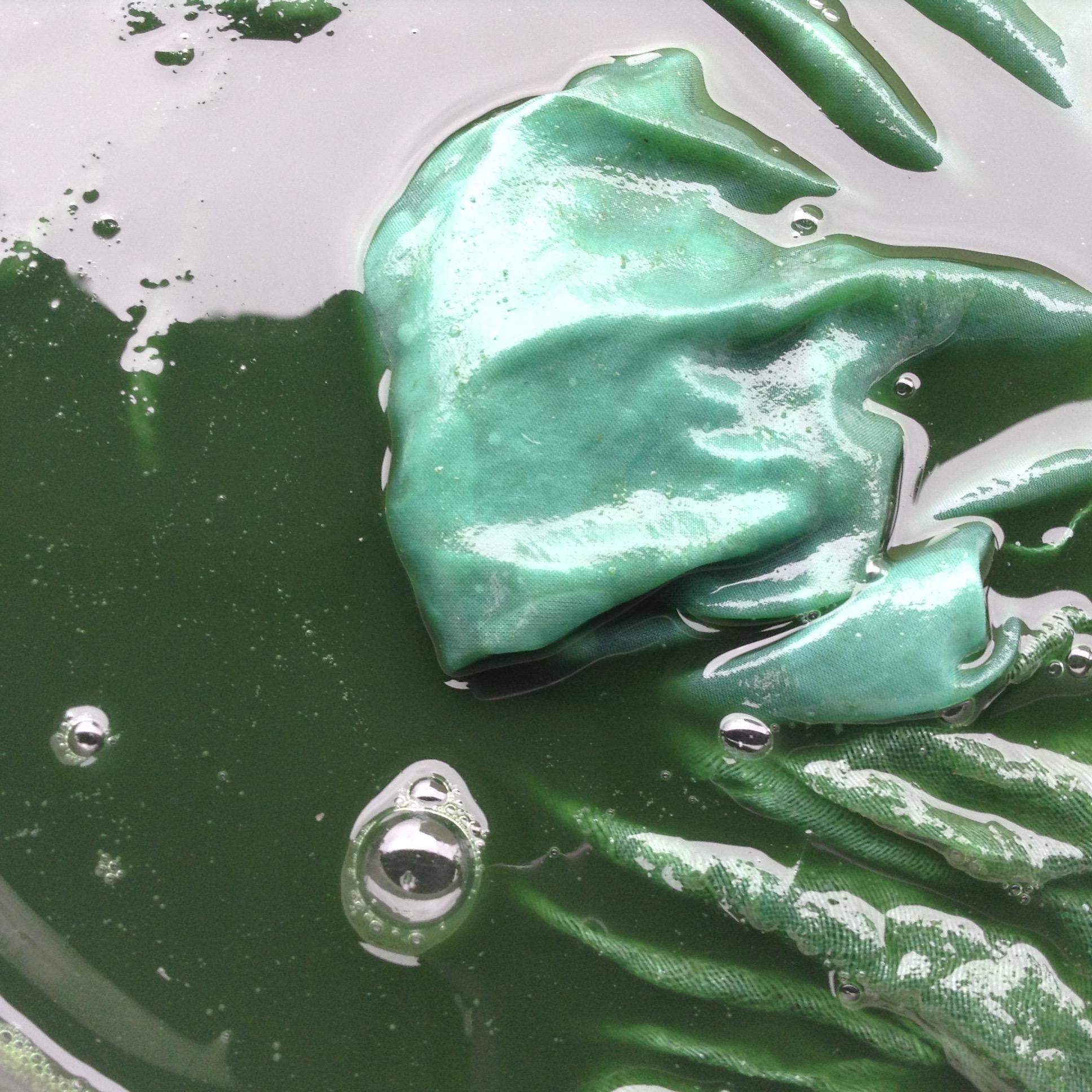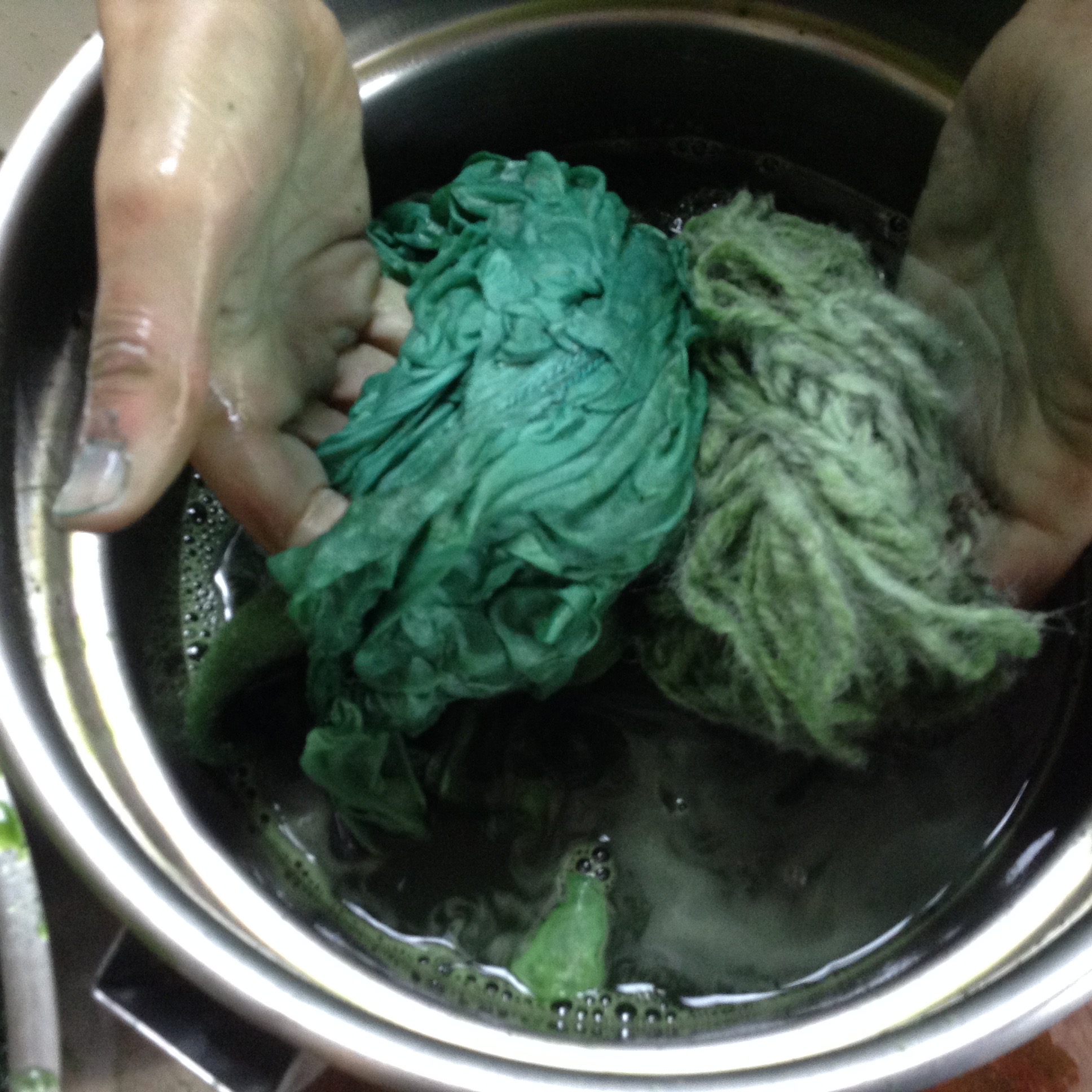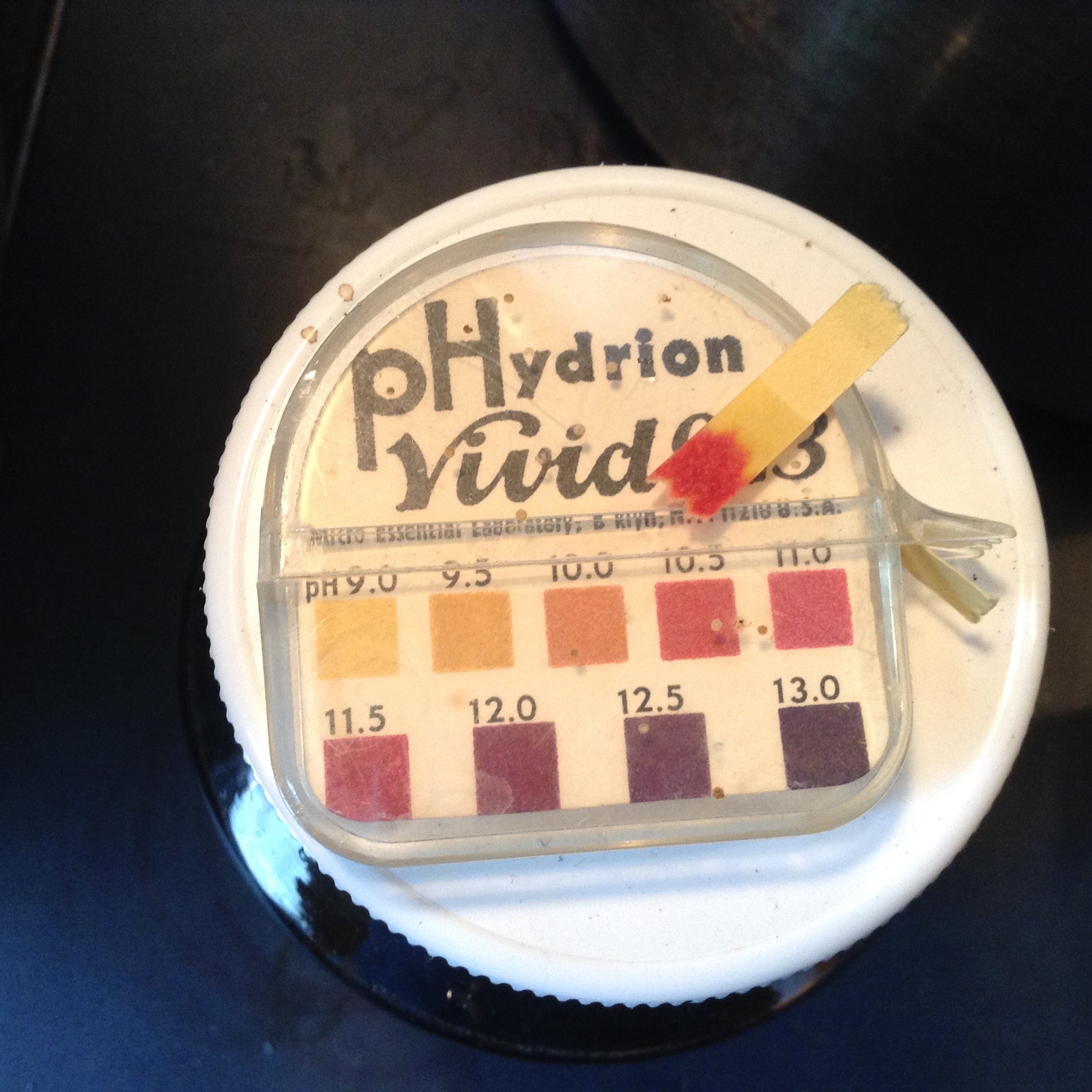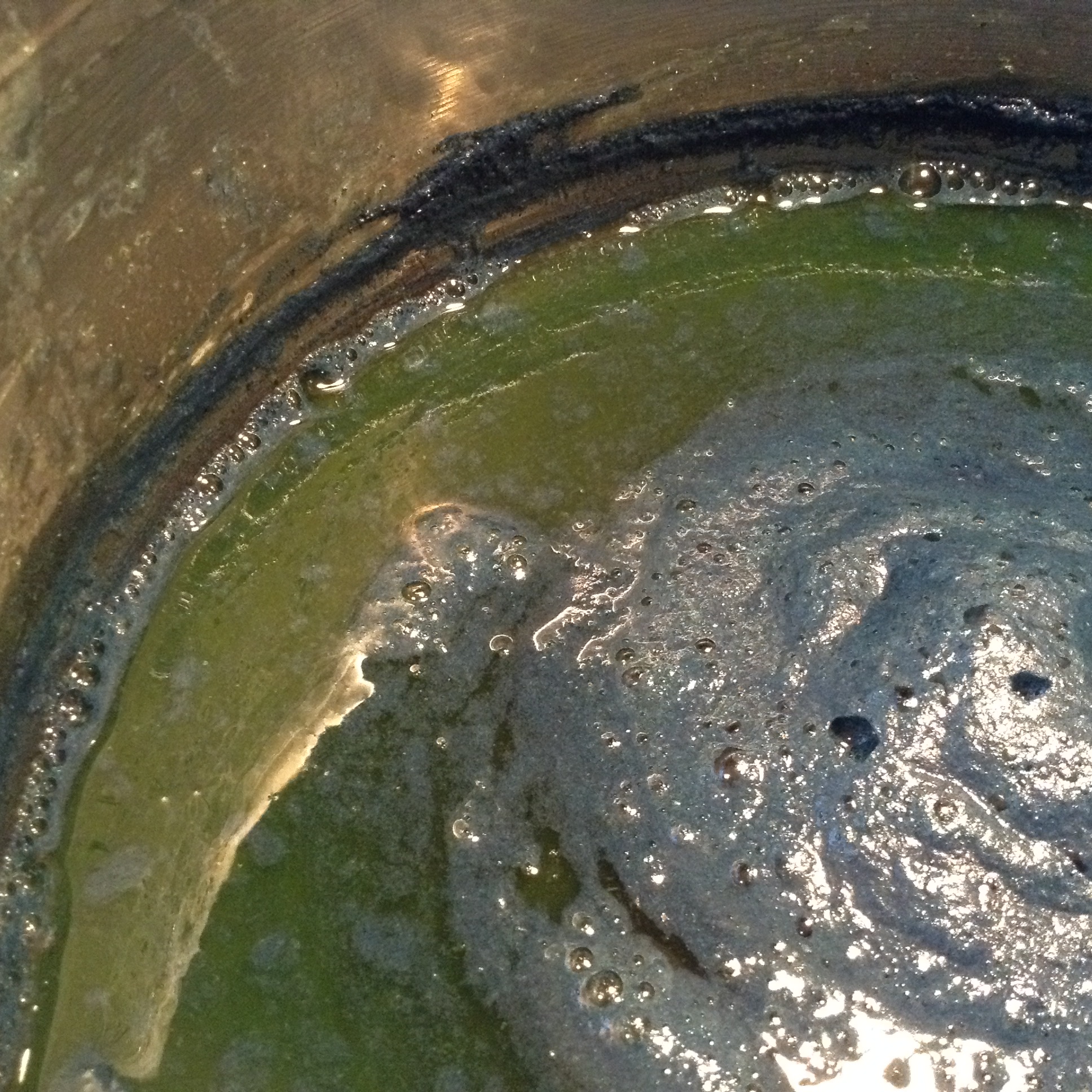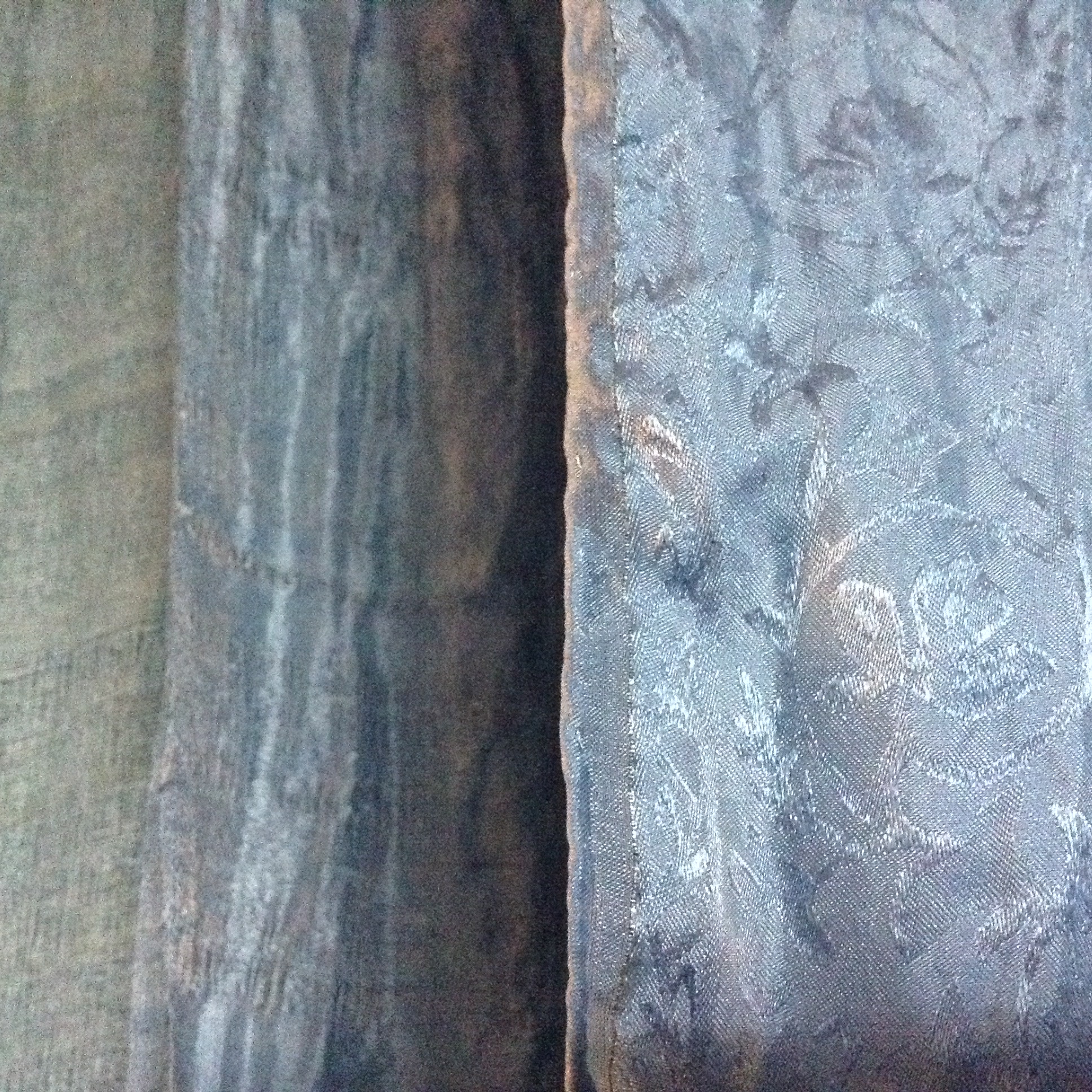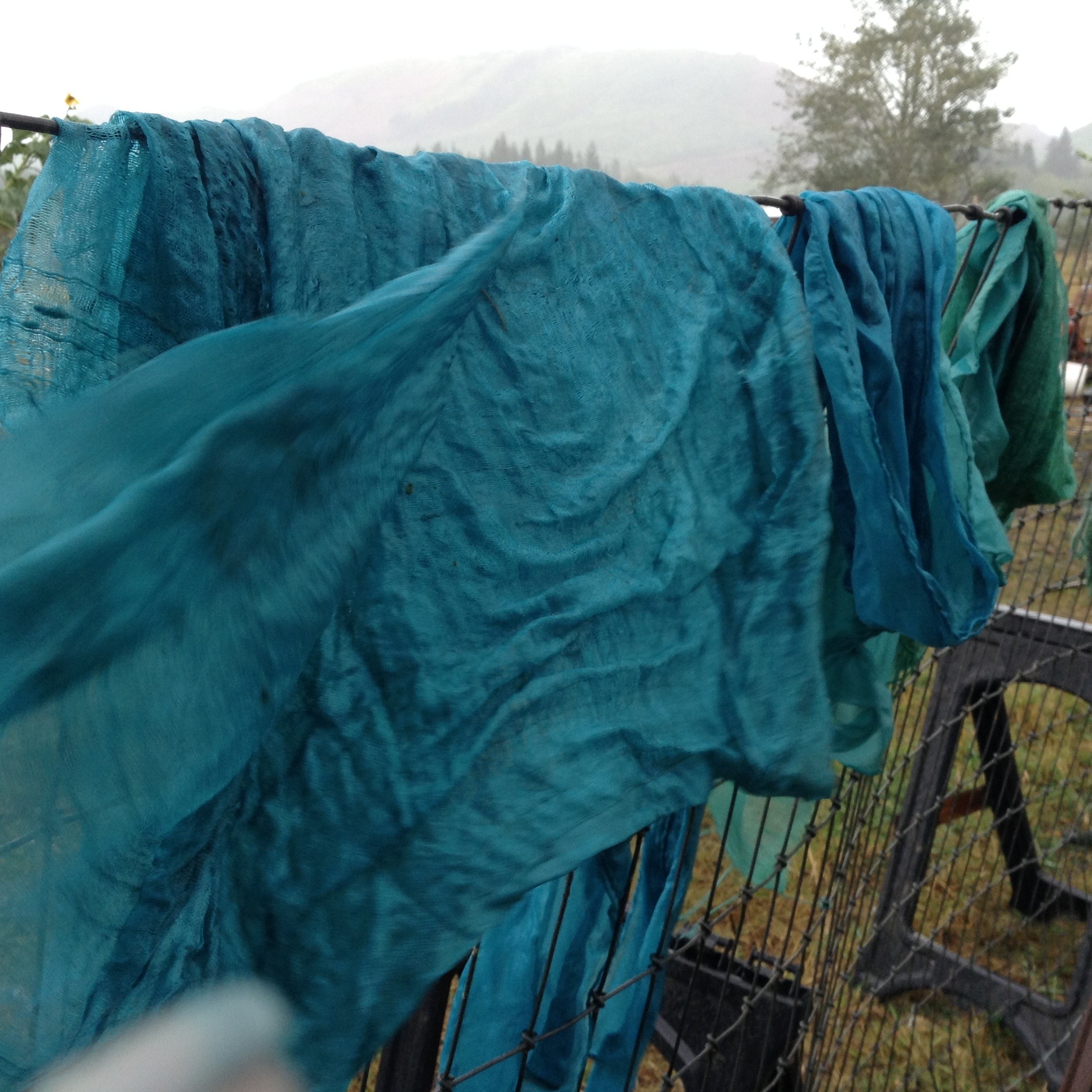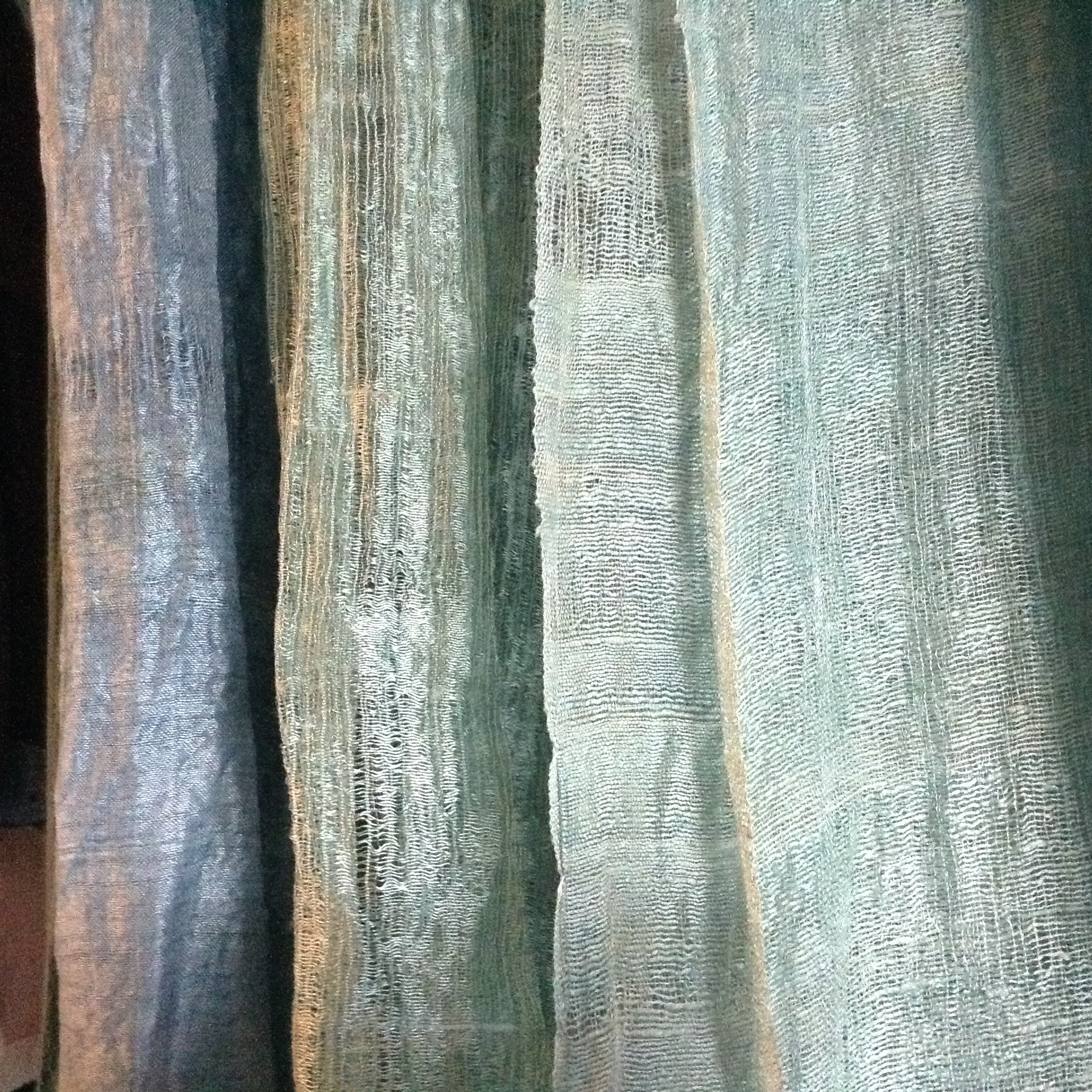I've got the Fresh Indigo Blues... And I feel fine.
IMG_4025
Indigo is the one and only true blue. Hidden in the leaves of many unrelated plants found around the world, is the same blue pigment extracted since ancient times using mystery and intuition by peoples everywhere. From my Irish ancestors turning themselves blue with woad, Isatis tinctoria, to the indigo containing tree in Peru, Cybistax antisphilitica, which may have been used to dye the recently excavated 6,000 year old indigo dyed cotton, Indigo is sacred in all its myriad forms found around the planet.
Yesterday I was so lucky as to spend a blustery rainy day in the outdoor kitchen of my dear friend Kestrel, dyeing with fresh leaves she has grown. (Kestrel and her husband Lâm are the geniuses behind HiiH Lights) The species we used is Persicaria tinctoria, a plant formally known as Polygonum tinctorium, which is the famed indigo of Japanese textiles. I had never had the chance to dye with fresh indigo before, so this was a dream come true. The whole operation was overseen by Kestrel's daughter, and some very curious Jacob sheep, who were very interested to see the transformation of their wool.
We tried three processes, inspired by information put forth by artist and teacher John Marshal, indigo grower and dyer Rowland Ricketts, as well as information found in Helen Melvin's little book, Colours of the World - Eco Dyeing.
Process One: came from Helen's book and involved blending up the fresh leaves with very cold water and adding some white vinegar. We strained out the leaf mush and set it aside. To the resulting bright green brew we soaked skeins of handspun wool and some silk for an hour. The color that resulted was decidedly more green in tone than what I am used to from other indigo processes.
Process Two: from Rowland's handout involved the same blending up of the leaves with cold water, this time sans vinegar. Another difference was only working the materials in the brew for 3- 5 minutes. Oxidising and rinsing briefly then redipping again. The silk came out an amazing true turquoise color as it oxidized, but settled into more of a sky blue once dried.
Process Three: Also came from Mr. Ricketts. After the first go around with the cold vats we combined the buckets of concentrated rinse water into each little vat of green, plus adding back in the strained out plant materials. To these two vats we added enough lime to reach 10.5pH and some fructose. The vats were then heated up to 110°F which was enough to reduce the indigo. This was used for some darker shades on silk and cotton.
I was breaking into spontaneous dancing and singing throughout the day. Looking forward to doing some more laster this week, hopefully with less wind and rain.
+++++++++++++++++++++++++++++++++++++++++++++++++++++++++++++++++++
BTW! I'm teaching a class!
If you live near the North Coast of Oregon.... On Saturday October 21st I will be presenting a $30 indigo + silk class using a dried indigo vat. The class is near Astoria out at HiiH Lights as part of their fall class series. We will be showing the documentary Blue Alchemy - Stories of Indigo with tea and popcorn after we do some dyeing. (Click the link to watch the trailer.)
Other upcoming classes in the series at HiiH include; Metal Gilding with artist Momoko Akada on September 30th, and Sheep + Fleece with spinner and wool enthusiast JoAnn Snead on October 7th. Click the link for more information on the classes, including how to sign up for any of them: HiiH Art Barn- Fall Class Series
Also if you are interested in dyeing with fresh indigo, Brittany Boles of Sea Folk Artisans, is offering a class using it at the red barn of North Fork 53 farm in Nehelem on Thursday September 28th. Click here for more info on that. (I wish I could attend, but will be out of town facilitating at a class in Austin Texas...)


